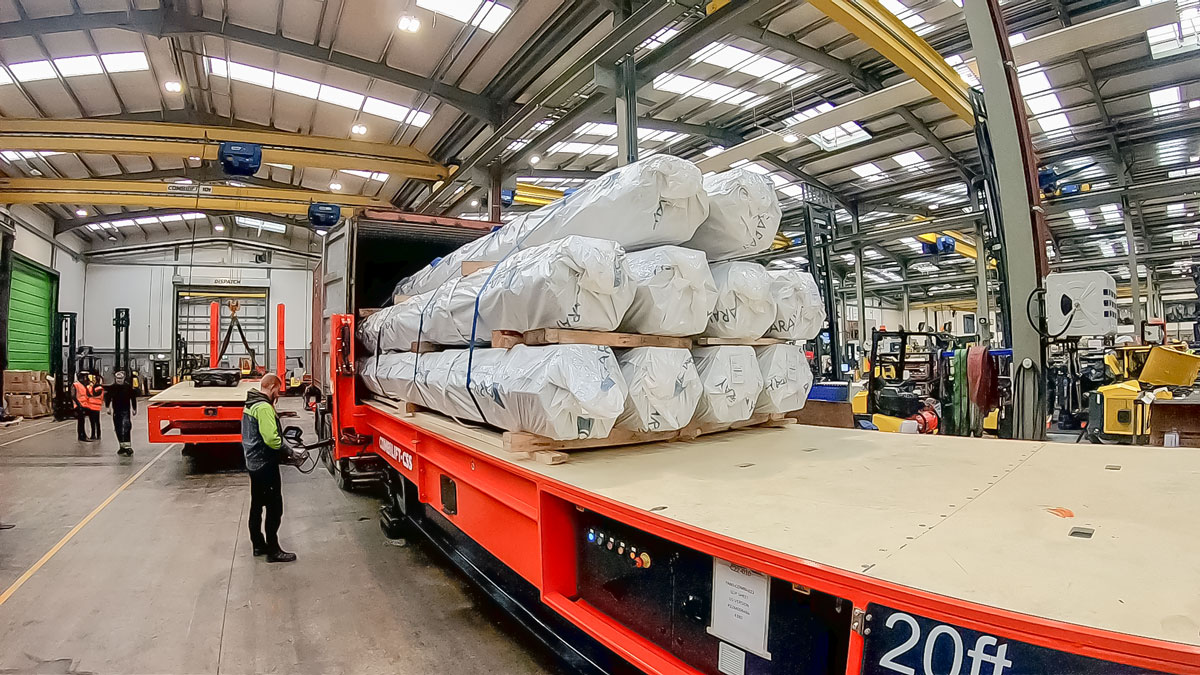Across industries, there are those solutions which are so simple and efficient that you wish they were developed much earlier. When it comes to loading and unloading shipping containers, Combilift’s Container Slip Sheet (CSS) is one such product. This specific solution has been a boon for businesses that handle especially long and heavy loads from trucks and containers. Products such as timber, steel, flat-packed furniture, and solar panels can now be loaded and unloaded in record time with an ingenious “Slip Sheet” design. Rather than spending time lifting the container off the truck and subsequently unloading it, the Combi-CSS uses a hydraulic motor to slide a steel sheet under the container’s entire load. Once the sheet is “loaded,” it retracts onto an attached platform, sliding out the contents in one uniform movement.
Combilift Design Engineer, Tadhg Treacy, explains just how much time can be saved by the CSS. “It will take about six minutes to unload a standard 40-foot container and send it on its way. This can be up to eight times quicker than previous unloading practices,” he says. Such time savings may seem too good to be true, and the question of why such a solution never previously existed continues to linger. In reply, one might suggest that the traditional swing lift was “good enough” and that materials handlers didn’t have the resources to consider an alternative. That is, until the pandemic hit in 2020, necessitating more efficient means for these businesses. As readers will well know, the pandemic exacerbated existing skills shortages and issues of cost efficiency. This inspired the Combi-CSS by removing the need for several staff to supervise the traditional swing lift. “When there’s longer, heavier products being handled, like steel bars, solar panels, or timber, you might have one person inside the container, a couple of people on the outside, and one in the truck cabin,” Tadhg explains. “The CSS was designed to remove the need for that and to improve the safety implications of materials handling.” Traditional practices have also included forklift slip sheet attachments which would essentially drag the pallets out of the container. When businesses deal with products as valuable and fragile as solar panels, they cannot afford to risk damaging their load. This further necessitated the design of a more graceful solution. “You’d be effectively, what we would call ‘skull dragging,’ the product out of the container,” Tadhg says. “So that was not as safe and it also meant that there was a fair bit of product damage.”
Another cost saving comes from the turnaround on sending off empty containers. As the pandemic slashed operational budgets and a shortage of shipping containers plagued the supply chain, businesses were tasked with ridding their sites of empty containers as soon as possible. If they couldn’t oblige, they would be faced with significant demurrage fees for holding them on site. By allowing containers to stay on trucks and emptying them much quicker, the CSS cuts these significant costs for businesses. Combilift Country Manager for Australia, Chris Littlewood, says every business will have to decide if the Combi-CSS is right for them. However, he believes there will often be the same clear winner. “Both swing lifters and the Combi-CSS bring specific advantages to the table. The decision between the two depends on assessing operational requirements, safety, efficiency, and cost savings,” Littlewood says. “But in my opinion, when comparing both pieces of equipment, the Combi-CSS has the upper hand. “If you’re looking for a solution that excels in efficiency, carries no capacity restrictions, and boasts a remarkably return on investment, the Combi-CSS is the way to go.”







